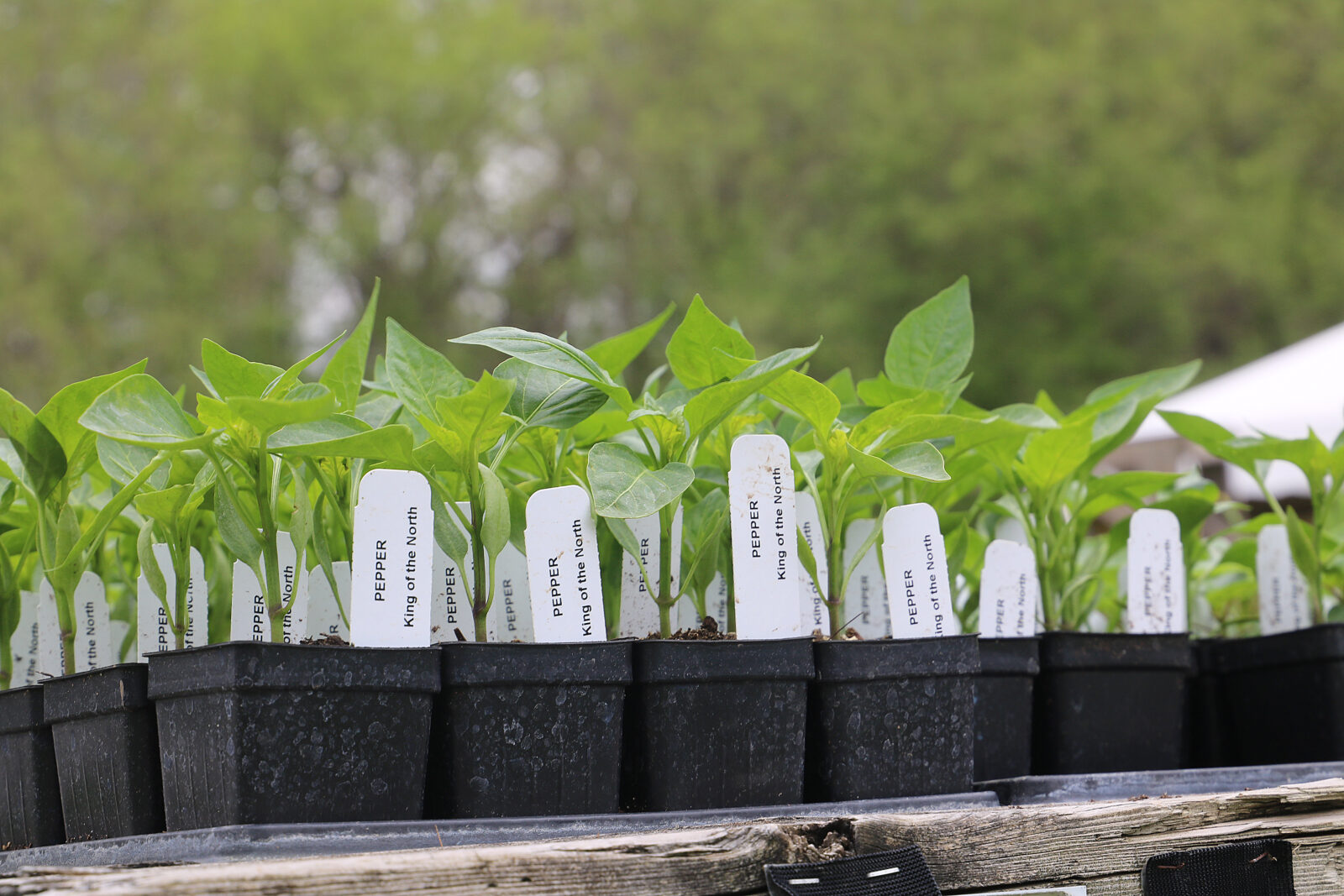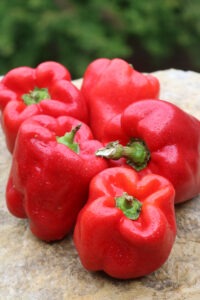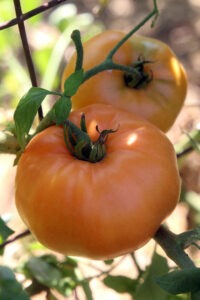More to explore
How to plant tomato and pepper transplants

Two of the most popular crops to start indoors and transplant out are peppers and tomatoes. These tips will help ensure that you will have healthy, happy plants after you introduce them to the great outdoors.

PEPPERS
Peppers prefer good drainage, plenty of sun, and hot weather. Space plants 18-24 inches apart, in rows 24 to 36 inches apart.
Plant on a cloudy day if possible after the last chance of frost has passed. Make planting holes larger than needed for each plant. Put some sifted compost mixed with bone meal (or an organic, well-balanced fertilizer) into each hole.
Set the plant so the lowest leaves are at the level of the soil. Press the soil down well, but firmly, to remove air pockets. Plants that are taller and spindly can be planted in a trench or at a diagonal, laying the whole stem and leaving only the top leaves above the soil. (Remove any leaves from the stem part in the soil.)
When the plants flower, side-dress them with compost. Add mulch around the peppers to keep weeds down and retain moisture.
How to grow and save pepper seeds.
TOMATOES

Determinate tomato cultivars grow to a certain height and then stop, putting all their energy into producing fruit heavily over a 4-6 week span.
Indeterminate cultivars grow all season and continue to produce fruit until frost. They will require trellising as allowing plants to sprawl could make them more susceptible to disease. Space plants 2-3 feet apart, trellising or staking as needed.
Tomatoes prefer full sun and plenty of space to grow. Deep soil with plenty of organic matter is ideal, with moderate levels of nitrogen and phosphorus and moderate to high levels of potassium and calcium.
Plant on a cloudy day if possible after the last chance of frost has passed. Make planting holes larger than needed for each plant. Put some sifted compost mixed with bone meal (or an organic, well-balanced fertilizer) into each hole.
Set the plant so the lowest leaves are at the level of the soil. Press the soil down well, but firmly to remove air pockets. Plants that are taller and spindly can be planted in a trench or at a diagonal, laying the whole stem leaving only the top leaves above the soil. (Remove any leaves from the stem part in the soil.)
Keep soil moist, but not soggy, and do not allow plants to dry out. Water plants at the base and avoid getting the leaves wet. Water about 1 inch of water per week; deep soaking is better than several light watering.
Cultivate to keep weeds down until the soil is warm, then lay down a deep mulch to smother weeds and conserve moisture. A weekly dose of liquid seaweed will increase fruit production.
When plants flower, side-dress with compost.
How to grow and save tomato seeds.
This was originally published on the Seed Savers Exchange blog on